A Fistful of Deadlands
Usually here at Black Gate I write about old-school tabletop roleplaying games or elements related to them, but now I’m going to truly show my age by writing about Deadlands. See, I continue to think of Deadlands as a new rpg even though it’s now a quarter of a century old. And what a quarter century it has been for this game.
Developed by Shane Lacy Hensley and originally released in 1996 by the Pinnacle Entertainment Group, Deadlands immediately proved quite popular with gamers and with critics, eventually earning as many as eight Origins Awards. And why not? Combining elements of horror with the legendary atmosphere of the Old West, along with a few touches of fantasy and steampunk, Deadlands was quite innovative not only for its time but also for today. I think that mixture of horror and Westerns was what originally drew me to this game.
Initially Deadlands was not only its own campaign setting, but was an rpg unto itself with its own rules. However, over the years Deadlands has evolved. In 1999 the rules went through an update, and then in 2001 were released GURPS and D20 rules for the setting. Eventually Deadlands became the backbone of a generic gaming system, Savage Worlds, and in 2006 Deadlands was released yet again, this time following the Savage Worlds rules and titled Deadlands: Reloaded. But things don’t end there. In 2017 the Deadlands 20th Anniversary Edition was published, and I was fortunate enough to pick up a copy at the Origins Game Fair that year. Then just this year, 2021, Deadlands was revised yet again to match the rules with the most recent version of Savage Worlds.
Speaking of Savage Worlds, it owes its existence to Deadlands, as Savage Worlds was also written by Shane Lacy Hensley and is published by the Pinnacle Entertainment Group. More than that, the rules for Savage Worlds are obviously based upon the older rules for Deadlands. The rules for each system are somewhat similar though Savage Worlds is quite a bit more streamlined than the original Deadlands rules.
So, the setting for Deadlands now exists under multiple rules. There are even sequel games and futuristic settings within the same world, mainly the games Deadlands: Hell on Earth, a post-apocalyptic rpg setting, and Deadlands: Lost Colony, a science fiction setting. There have also been Deadlands card games and tabletop games. For that matter, there are plenty of rules books with additional information for players and game masters alike. There are even novels and a music CD.
More than just another game system, Deadlands has proven to be an intriguing, adventurous game setting all on its own. The setting has changed a little over the years with some retconning here and there in various publications, but the basics are that during the American Civil War the dead began to rise on some of the battlefields, most notably at Gettysburg. But that was just the beginning. Besides the walking dead, other monstrosities began to make themselves known, and even seemingly mere mortals began to have magical powers available to them along with some strange weapons. Of course the various governments of the world create secret special operative groups to deal with the new terrors, and American and world history undergoes some major changes in the following years. And while the whole world has been affected by all this, the vast majority of the action in Deadlands takes place in the Old West, a place familiar but quite different from the historic real-world’s Old West. The setting is much more complicated than that brief explanation, but I don’t want to spoil any of the game’s secrets for those who might be interested in playing. Let’s just say, I’m sure you’ll have some fun.
As for game mechanics, the original Deadlands and its various editions differ quite a bit, but I can at least cover some basics for that original game.
For those of you who are familiar with tabletop rpgs, I’ll warn you right off the bat that a mere handful of dice won’t suffice. Not only will you need a lot of dice, and I do mean a lot, but you’re also going to need a fair supply of poker chips and a minimum of two decks of regular playing cards, though a third and even a fourth deck might come in handy. Oh, yeah, and it never hurts to have an old cowboy hat laying around for tossing those poker chips into.
Character statistics sound a bit different than from many rpgs, but they’re not so different as to be completely unfamiliar. Characters utilize the following Mental abilities: Cognition, Knowledge, Mien, Smarts and Spirit. Then there are the Corporeal statistics of Deftness, Nimbleness, Strength, Quickness, and Vigor. Most of the abilities listed above affect the various skills that characters can have, with each skill having a die value equal to the statistic it is related to. What makes the original Deadlands rules unique is that character statistics are not crafted through dice rolling, point buying, or any of the other familiar statistics creation elements. Instead, character statistics were decided by cards drawn from a deck by the character’s player.
Depending on the cards drawn, the various statistics rank from a low of a d4, a four-sided die, to a high of a d12, a twelve-sided die. But it gets even more complex than that. Each skill not only has a dice value, but also has what’s called a Coordination value. The Coordination value is the number of dice to be rolled for a character to perform an action, and this number is based upon how experienced a character is with that particular skill. For example, a character who wants to gamble would have a “Gamblin’” Coordination value but the type of dice to be rolled would be based upon the character’s Smarts stat since Gamblin’ falls under Smarts. So, if a character has a d6 in Smarts and a Gamblin’ Coordination value of 4, then the player would roll four d6 and the game master would then announce if the number rolled was high enough for the character to succeed at gambling. Various abilities and situational game mechanics also could affect a character’s stats.
In other aspects of play, combat initiatives are determined by cards chosen from the deck. Cards also come into play when certain types of magic are utilized by player characters, specifically by what are called Huckster characters. The cards and dice determine whether such a character can cast their magic and how powerful the effects of the magic will be.
The poker chips are used as Fate Chips. At the beginning of a gaming session players draw their three chips from a pile. The chips can then be used to avoid wounds in combat or to help with dice rolling. The game master also gets Fate Chips for use by non-player characters. Standard poker chips comes in three colors, red and white and blue, and each color has a different helpful value in Deadlands with blue usually being the most powerful. When a session is finished, players can cash in their remaining Fate Chips for experience points or, with the game master’s permission, can hold over their chips to the next session.
Okay, those are the basics of the original Deadlands game, and I hope I did you a service by making it understandable. Of course the D20 and GURPS versions of Deadlands follow the specific rules for those systems, and the more modern Savage Worlds version of Deadlands follows its own rules, though those rules are very much a simplified version of the original Deadlands rules with dice and chips and cards, but at least fewer dice are rolled, speeding up play.
If you’re a fan of horror and the Old West, and you enjoy tabletop rpgs, you need to at least give Deadlands a try. You can even play online with friends as the Roll20 gaming website has tools for playing Deadlands, including digital dice, chips, and cards.
If you’re an old-timer who has done your fair share of sixgun hammer fanning and magical card tossing in Deadlands, I’d love to hear some of your stories in the Comments section below. And if you’re new to Deadlands and want to know more, I’d love to hear that as well.
Ty Johnston is vice president of the Rogue Blades Foundation, a non-profit organization focused upon bringing heroic literature to all readers. A former newspaper editor, he is the author of several fantasy trilogies and novels, including City of Rogues and The God Sword.
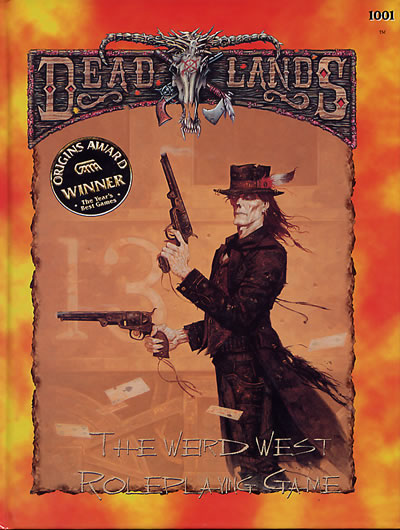
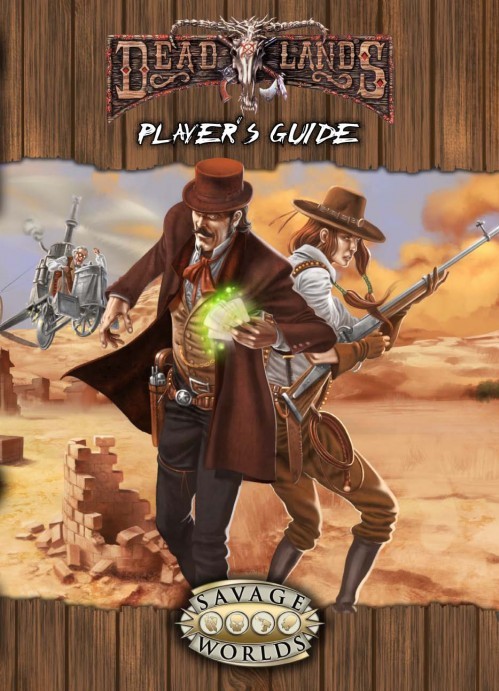
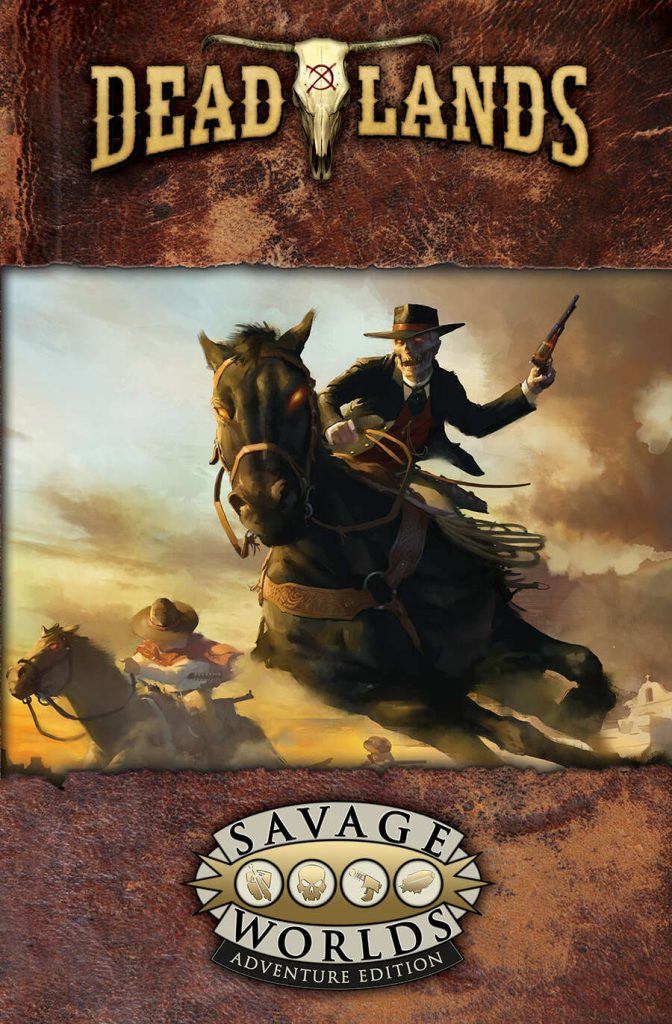
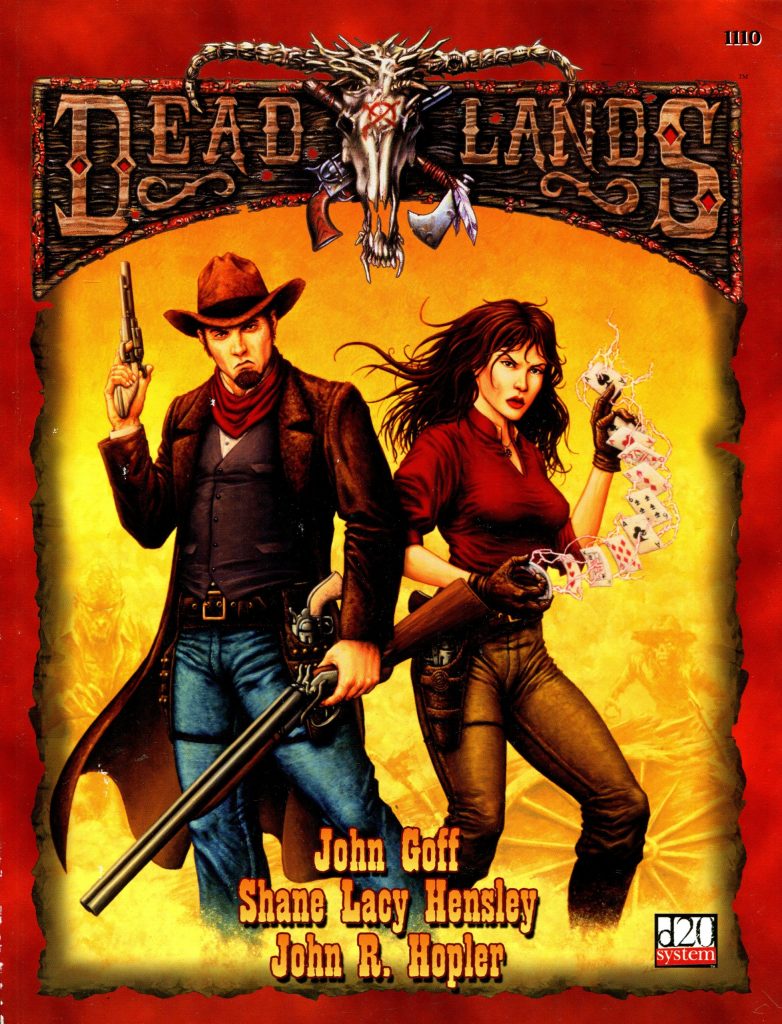
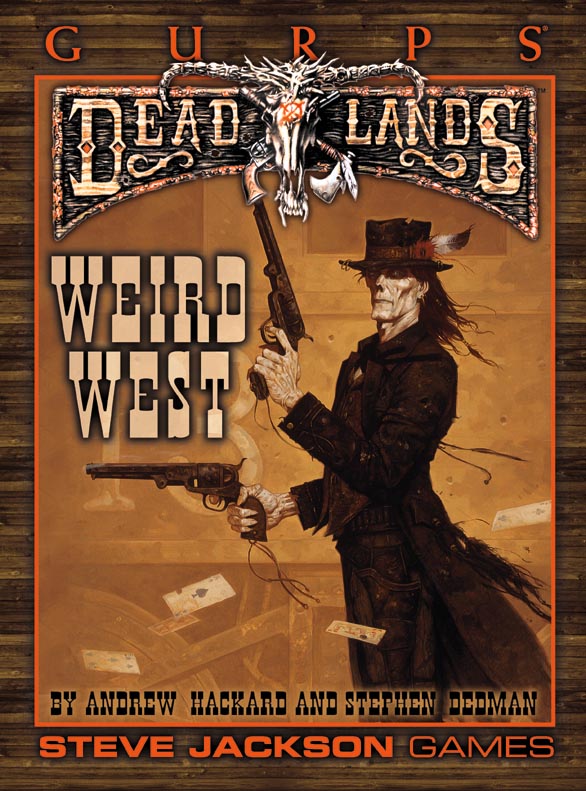

have loved this setting since the OG days, i also very much loved the miniature game they put out called Deadland: Great Rail Wars, had some very interesting scenario/story rules to it.
i remember the sidekick rules to be crazy, and there being a very easy way to min/max and almost become a super hero. as a side note, one of the best actual plays of this is in t he beginning of Geek and Sundry Critical Role plays for charity and i remember laughing a lot at that.
I picked the first version of the rulebook in 1996. Then had to put it back down. I was a history major at the time, and the alt-history made me cringe. I honestly think the whole setting would have been better if it had just committed to the pulp western vibe and chucked the history.
I was a Bounty Hunter for Pinnacle back in the day, demonstrating the original Deadlands at conventions in the Lehigh Valley. My fellow bounty hunter Larry and I would co-GM adventures at conventions to try and give people the full experience of the system. I remember a particular adventure we created which was based on the movie Stagecoach, which an eclectic cast of character trying to get from point A to point B. Of course our pregenerated characters included an undercover Pinkerton and a Texas Ranger, which just added to the fun.